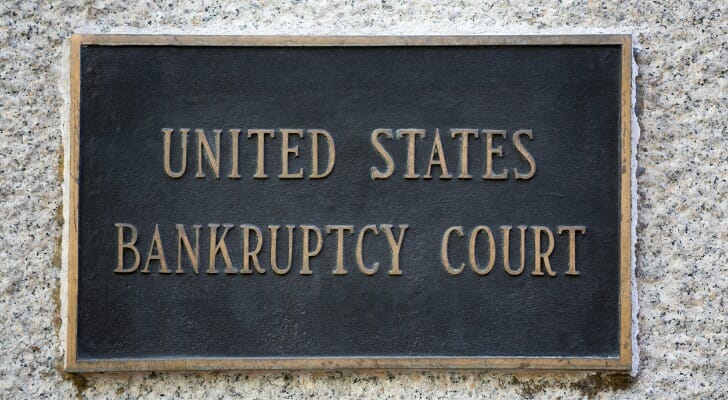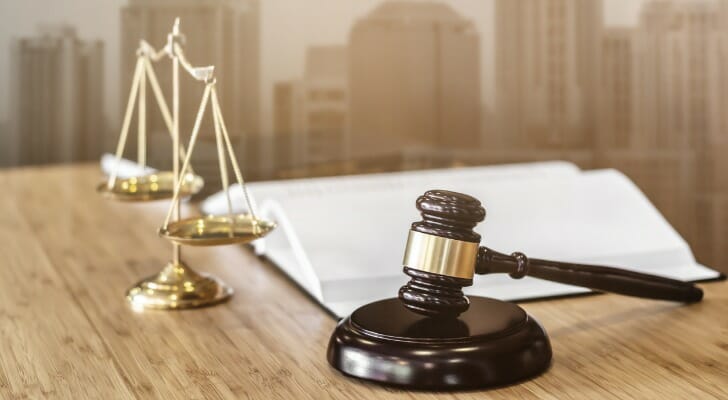 When financial troubles mount and debts are piling up, filing for bankruptcy protection may be a last resort option. Personal bankruptcy filings usually involve Chapter 7 or Chapter 13, but when businesses need help, they may seek to reorganize by filing Chapter 11 bankruptcy. Of the three, Chapter 11 is generally the most complex filing option but it can bring relief during difficult times. Here’s more on what’s involved with this type of bankruptcy filing, how it works, and who can use it.
When financial troubles mount and debts are piling up, filing for bankruptcy protection may be a last resort option. Personal bankruptcy filings usually involve Chapter 7 or Chapter 13, but when businesses need help, they may seek to reorganize by filing Chapter 11 bankruptcy. Of the three, Chapter 11 is generally the most complex filing option but it can bring relief during difficult times. Here’s more on what’s involved with this type of bankruptcy filing, how it works, and who can use it.
What Is Chapter 11 Bankruptcy?
To understand Chapter 11 bankruptcy, it helps to know a little about how other bankruptcy filings work. With Chapter 7 bankruptcy, for example, filers can essentially wipe the financial slate clean by eliminating debts included in the filing. The trade-off is that they may have to liquidate some of their assets to satisfy their creditors. Chapter 13 bankruptcy, on the other hand, gives debtors a way to repay what they owe over time, without fear of losing their assets.
Chapter 11 bankruptcy is often called a reorganization bankruptcy because of what it’s designed to do. This type of bankruptcy case can be used by corporations, partnerships and other businesses to reorganize and restructure debt so that can creditors can be paid without having to shut down operations. But individual debtors can also file for Chapter 11 bankruptcy if they aren’t eligible for Chapter 7 or Chapter 13, based on their income or debt levels.
How Chapter 11 Bankruptcy Works
Chapter 11 bankruptcy cases can be filed voluntarily by a business and its owners. It can also happen involuntarily if creditors choose to file a bankruptcy proceeding against a business, though this is uncommon. Filing voluntarily means completing the Chapter 11 paperwork, paying the filing fee and submitting your petition to the bankruptcy court.
Once your petition is received, you’re automatically protected against creditor lawsuits or other debt collection actions. All debt collection efforts have to cease at this point. The next step is coming up with a reorganization plan for managing and paying off your debts. You’ll also have to complete credit counseling with an approved agency within 180 days of filing.
If you’re filing as a business, your business can continue operating during this time. But there are certain things you’ll need to get the bankruptcy court’s approval for, including:
- Selling any business assets, including real estate, that isn’t a regular part of doing business
- Signing or breaking a lease
- Getting any secured loans
- Closing your business or expanding operations
- Signing or changing contracts, including vendor tradeline agreements or licensing agreements
- Paying fees for attorneys or other professionals associated with your business
The reorganization plan is at the center of a Chapter 11 bankruptcy filing. This plan is meant to spell out how you’ll continue running your business and pay what’s owed to your creditors. For example, your plan may involve selling off certain business assets or modifying the terms of existing business loans.
When the reorganization plan is ready, your creditors review it and can either accept or reject it. If your creditors give your plan the green light, the bankruptcy court will then review and decide whether to approve it. And if you don’t come up with a plan in the time that you’re allotted, your creditors can propose a reorganization plan for you.
Once a plan is approved, the next step is implementing it. All bankruptcy cases, including Chapter 11 bankruptcy filings, are assigned to a trustee who’s responsible for monitoring the case’s progress. The trustee is also responsible for overseeing a meeting of creditors, in which you can be questioned by your creditors under oath regarding your finances and debt.
In terms of timing, it can take up to a year to complete the first phase of a Chapter 11 bankruptcy, in which you file, create your reorganization plan and get it approved by your creditors and the court. The second phase, in which you pay back what you owe, can take three to five years to complete, depending on the terms of your plan.
How Creditors Are Paid in Chapter 11
The goal of Chapter 11 is to give your creditors financial recourse for what you owe but they aren’t treated equally. And a reorganization plan doesn’t guarantee that creditors included in the filing will receive 100% of the money they’re owed.
Secured creditors receive first priority in a Chapter 11 bankruptcy since they’re owed debts that are secured by some type of collateral. For example, if you own a building that’s mortgaged or a fleet of business vehicles that you used an equipment loan to purchase, those creditors would have to be addressed first in your reorganization plan. Generally, these creditors have to receive payment that’s equal to the fair market value of the collateral associated with the loan.
Unsecured creditors would come next. This group of creditors may include your vendors and suppliers, credit card companies or anyone else you owe unsecured loans to. These creditors can only be paid once secured creditors have been paid. So for example, if your suppliers are owed money that isn’t secured by inventory then they’d have to take a backseat until secured creditors are paid.
Last on the payment totem pole are general creditors, which can include corporate stockholders. If a company issues shares of preferred stock and common stock, shareholders owning preferred stock get paid first.
Filing Chapter 11 Bankruptcy for Personal Debt
While it’s not common, you can technically file for Chapter 11 protection for personal debts. The mean reason for doing so is usually because your debt level is too high for you to qualify for Chapter 13 bankruptcy or you make too much money to file Chapter 7. For 2020, you can only file Chapter 13 if your unsecured debt is less than $394,725 and secured debts are less than $1,184,200. Income limits for Chapter 7 are determined by the means test and are based on your household size and state of residency.
A Chapter 11 filing for personal debt works similar to one for business debt. You still have to come up with a plan for repaying what you owe and your creditors have to approve it. A trustee oversees your case and your secured creditors take precedence over unsecured creditors. Chapter 11 could help you to reorganize your debts and restructure payment terms for loans or credit cards so you don’t have to sell off any of your assets, such as a home or vehicles you own.
The Bottom Line
 Chapter 11 bankruptcy can help protect you financially while attempting to provide a fair and equitable payment solution for your secured and unsecured creditors. A Chapter 11 bankruptcy case or any bankruptcy filing for that matter can result in significant damage to your credit score so it’s important to weigh the pros and cons. Talking to a bankruptcy attorney or credit counselor can help you determine whether filing Chapter 11 makes sense for your business or personal debt situation.
Chapter 11 bankruptcy can help protect you financially while attempting to provide a fair and equitable payment solution for your secured and unsecured creditors. A Chapter 11 bankruptcy case or any bankruptcy filing for that matter can result in significant damage to your credit score so it’s important to weigh the pros and cons. Talking to a bankruptcy attorney or credit counselor can help you determine whether filing Chapter 11 makes sense for your business or personal debt situation.
Tips for Business Owners
- Many financial advisors specialize in working with business owners. If you don’t have a financial advisor yet, finding one doesn’t have to be complicated. SmartAsset’s free tool matches you with financial advisors in your area in five minutes. If you’re ready to be matched with local advisors who will help you achieve your financial goals, get started now.
- Generally speaking, retirement assets, including 401(k) plans, SIMPLE IRAs, SEP IRAs, traditional IRAs and Roth IRAs, are protected from creditors during a bankruptcy proceeding. But you should keep in mind that if you have inherited IRA assets or you withdraw funds from your business or personal retirement account prior to a bankruptcy filing, those funds are not protected from creditors.
Photo credit: ©iStock.com/martin-dm, ©iStock.com/Chalirmpoj Pimpisarn, ©iStock.com/carterdayne
